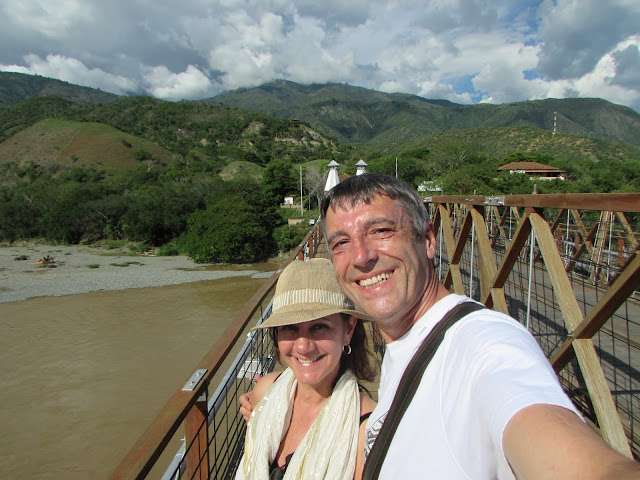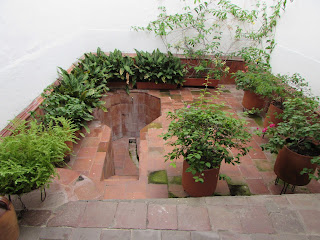Santa Fe de Antioquia is a municipality in the Antioquia Department of Colombia. It is located approximately 50 miles (80 km) north of Medellín, the departmental capital city. And has a population of around 23,000 inhabitants.
Established in 1541 by Jorge Robledo as the 'Villa de Santafé' on the west bank of the Cauca River.
in 1545 it received the coat of arms and the title of 'City of Antioquia' from King Philip II of Spain. It was then elevated to the status of parish in 1547 by the bishop of Popayán. It changed its name in 1584 when it became the capital of Antioquia. It was a mining town from its beginnings and the gold mining operation has been the base of its economy.
Its cathedral was constructed in 1799 and elevated to Diocese of Antioquia in 1804 by Pope Pius VII. In 1813 Antioquia was declared a sovereign and independent state with Santa Fe as its capital, a status it maintained until 1826, when Medellín was chosen as the new departmental seat. Due to the state of conservation of its colonial architecture, it was declared a national monument in 1960.
 |
| Totumo Tree |
 |
| The office. Designed for tranquility |
 |
| Typical calle in Santa Fe |
 |
| Iglesia Santa Barbara |
 |
| Orchid / Orquidea |
 |
| Orchid / Orquidea |
 |
| Monumento a la Agricultura y la Minería - Santa Fé de Antioquia - Antioquia |
 |
| Typical street art on the inside wall of a jewelry store |
 |
| Street market in the main plaza |
 |
| Catedral Basilica Inmaculada Concepcion de Santa Fe de Antioquia |
 |
| Monument to Juan Del Corral |
 |
| Puente de Occidente |
The Puente de Occidente (Bridge of the West), was named as such because it is located in western Antioquia, Colombia. It is a suspension bridge that connects the municipalities of Olaya and Santa Fe de Antioquia, east and west of the Cauca River, respectively. At the time it was considered the seventh largest suspension bridge worldwide.
The bridge is a single suspension span supported from four pyramidal towers - two on each bank of the river - with each tower anchoring two cables. The span has a main central section which cars and smaller trucks can cross, and two pedestrian paths on either side of the central roadway. All three paths have wood upper surfaces. Construction started in 1887, under the direction of engineer José María Villa , after authorization by Marcelino Vélez, governor of Antioquia. The cables and other steel parts were purchased from England, while the towers were constructed of local materials. The Puente de Occidente was initially open only to pedestrian traffic; later, vehicles were allowed.
 |
| Cafe and Market on the East side of Puente de Occidente |
 |
| Best way to get around is in a Moto Taxi |
 |
| Rio Cauca |
 |
| The Virgin Mary guards the bridge. |
 |
| Prayer without lights |
Museo Juan Del Coral
The Juan del Corral Museum houses a 496-object collection that includes documents, works of colonial art, and archaeological and ethnographic artifacts. Among these is the table on which the dictator Juan del Corral signed the Act of Independence of Antioquia in 1813. The colonial-style house has seven rooms, including the Prehistory and Conquest Room and the Colony, Independence, and Republic Rooms.

 |
| Green Banded Urania |
































